Abstract
Phenanthrene-degrading bacteria were isolated from Chesapeake Bay samples by the use of a solid medium which had been overlaid with an ethanol solution of phenanthrene before inoculation. Eighteen representative strains of phenanthrene-degrading bacteria with 21 type and reference bacteria were examined for 123 characteristics representing physiological, biochemical, and nutritional properties. Relationships between strains were computed with several similarity coefficients. The phenogram constructed by unweighted-pair-group arithmetic average linkage and use of the simple Jaccard (SJ) coefficient was used to identify seven phena. Phenanthrene-degrading bacteria were identified as Vibrio parahaemolyticus and Vibrio fluvialis by their clustering with type and reference strains. Several phenanthrene-degrading bacteria resembled Enterobacteriaceae family members, although some Vibrio-like phenanthrene degraders could not be identified.
Full text
PDF
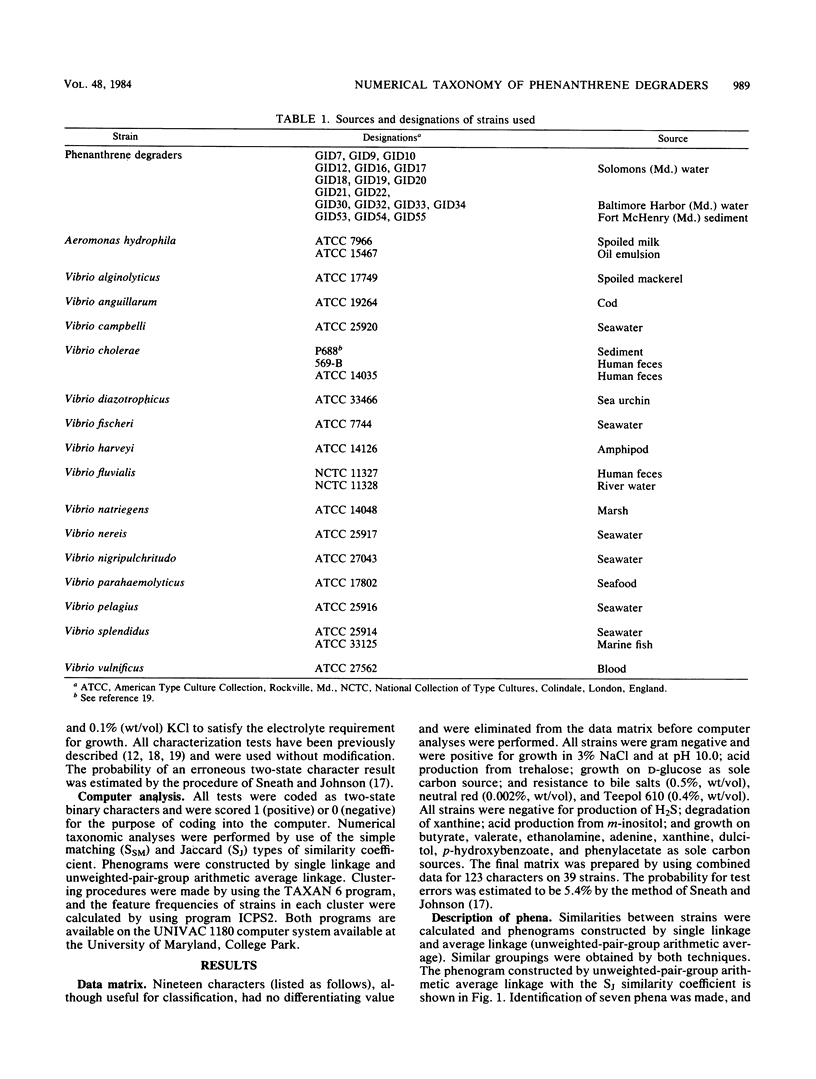
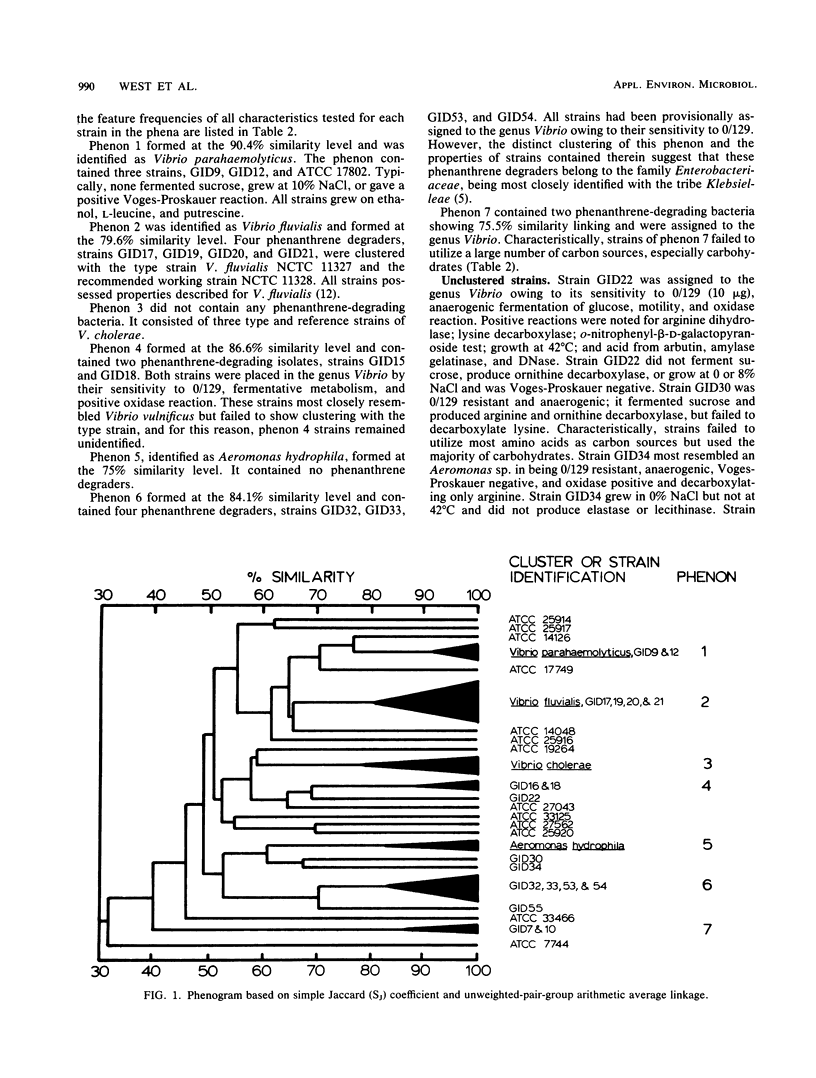
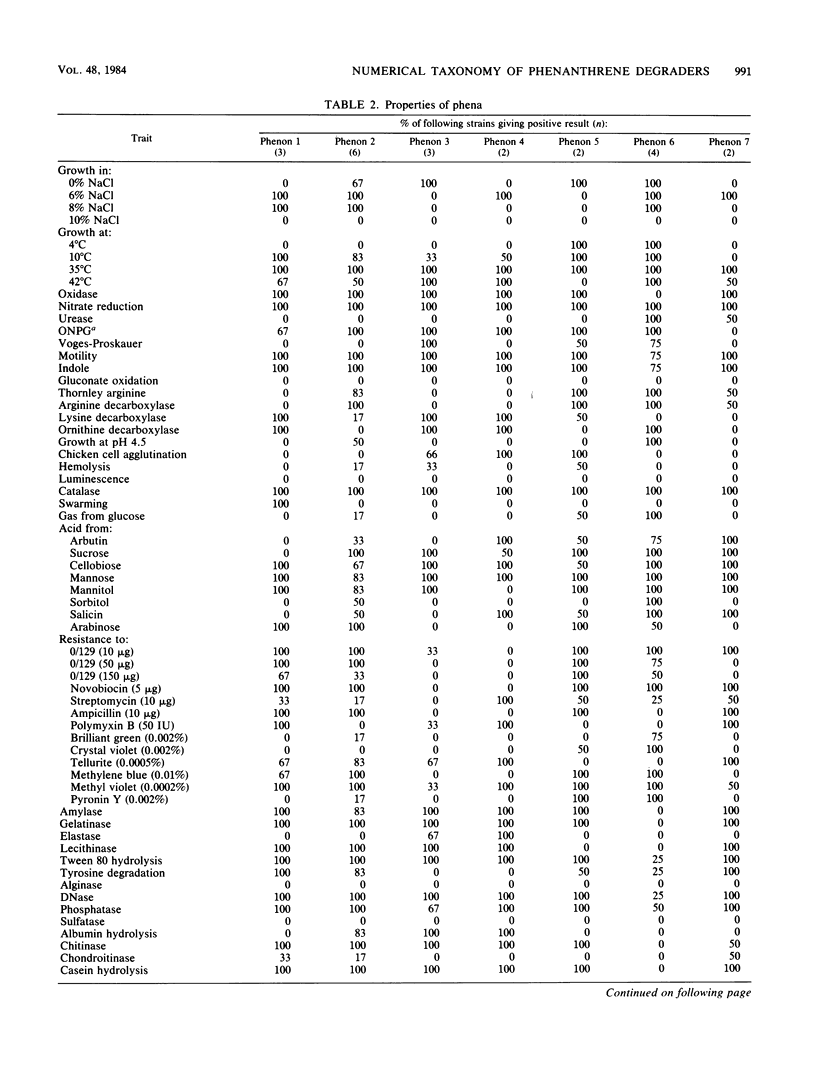
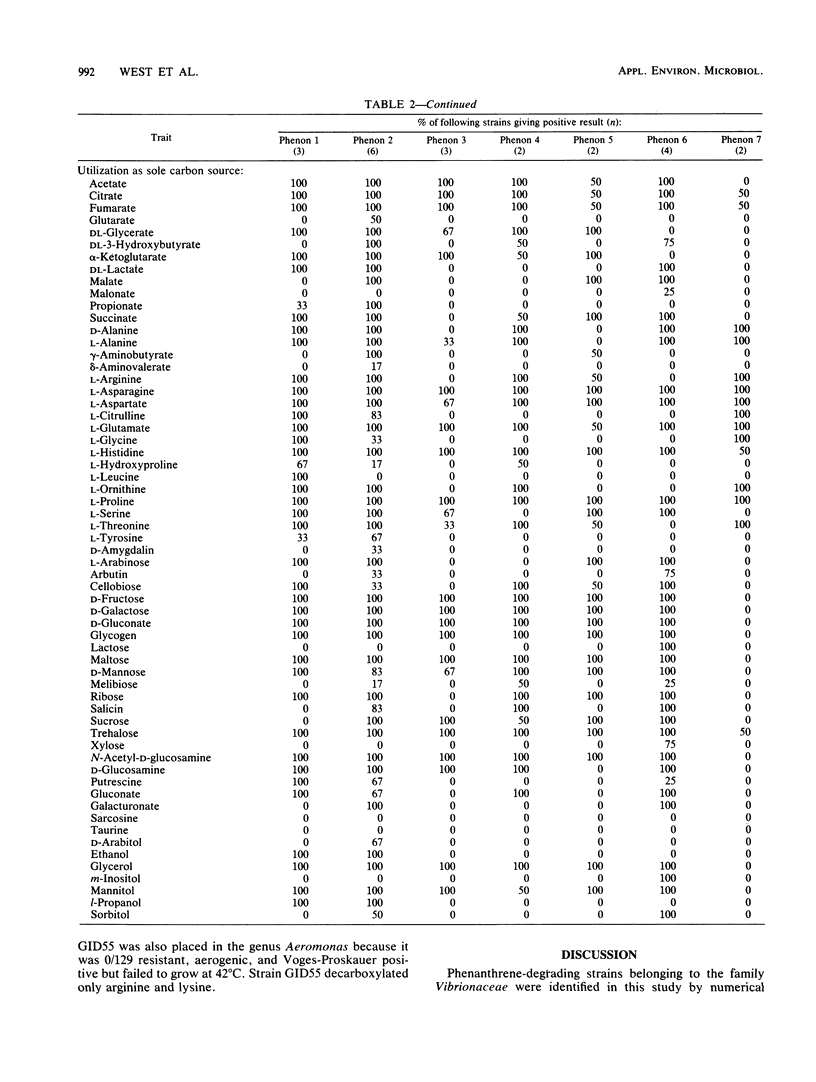
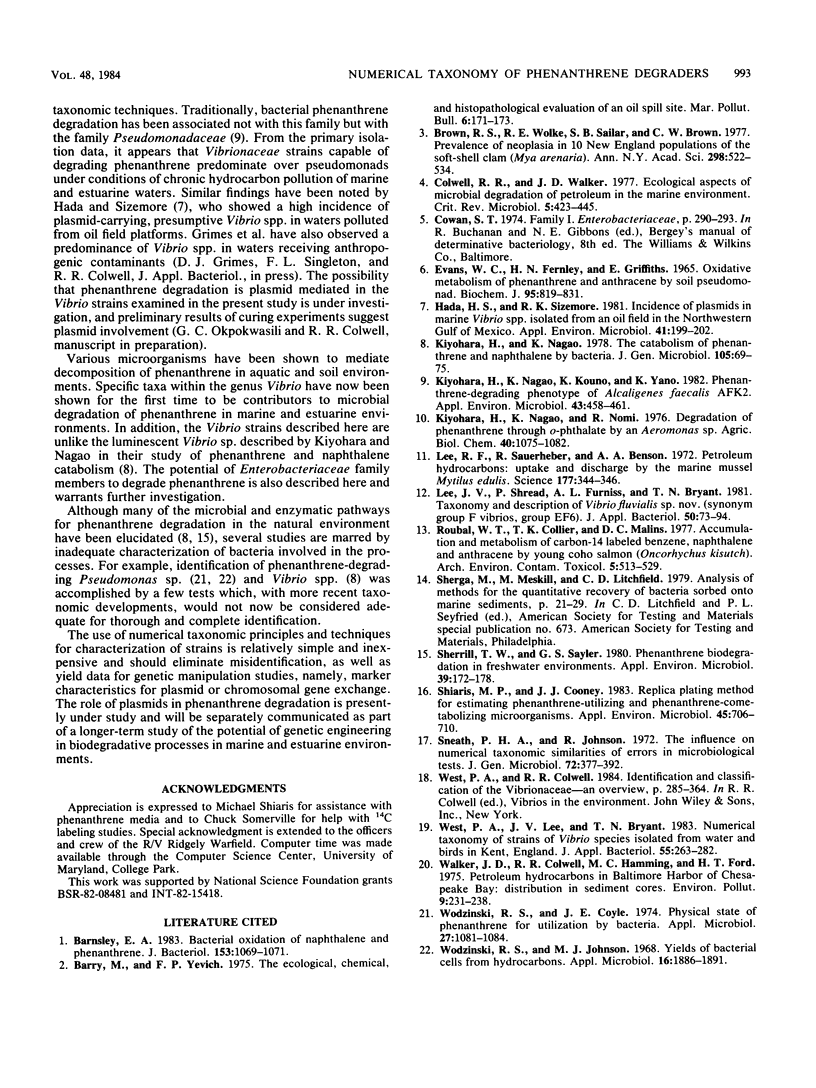
Selected References
These references are in PubMed. This may not be the complete list of references from this article.
- Barnsley E. A. Bacterial oxidation of naphthalene and phenanthrene. J Bacteriol. 1983 Feb;153(2):1069–1071. doi: 10.1128/jb.153.2.1069-1071.1983. [DOI] [PMC free article] [PubMed] [Google Scholar]
- Brown R. S., Wolke R. E., Saila S. B., Brown C. W. Prevalence of neoplasia in 10 New England populations of the soft-shell clam (Mya arenaria). Ann N Y Acad Sci. 1978 Sep 29;298:522–534. doi: 10.1111/j.1749-6632.1977.tb19287.x. [DOI] [PubMed] [Google Scholar]
- Colwell R. R. Ecological aspects of microbial degradation of petroleum in the marine environment. CRC Crit Rev Microbiol. 1977 Sep;5(4):423–445. doi: 10.3109/10408417709102813. [DOI] [PubMed] [Google Scholar]
- EVANS W. C., FERNLEY H. N., GRIFFITHS E. OXIDATIVE METABOLISM OF PHENANTHRENE AND ANTHRACENE BY SOIL PSEUDOMONADS. THE RING-FISSION MECHANISM. Biochem J. 1965 Jun;95:819–831. doi: 10.1042/bj0950819. [DOI] [PMC free article] [PubMed] [Google Scholar]
- Hada H. S., Sizemore R. K. Incidence of Plasmids in Marine Vibrio spp. Isolated from an Oil Field in the Northwestern Gulf of Mexico. Appl Environ Microbiol. 1981 Jan;41(1):199–202. doi: 10.1128/aem.41.1.199-202.1981. [DOI] [PMC free article] [PubMed] [Google Scholar]
- Kiyohara H., Nagao K., Kouno K., Yano K. Phenanthrene-degrading phenotype of Alcaligenes faecalis AFK2. Appl Environ Microbiol. 1982 Feb;43(2):458–461. doi: 10.1128/aem.43.2.458-461.1982. [DOI] [PMC free article] [PubMed] [Google Scholar]
- Lee J. V., Shread P., Furniss A. L., Bryant T. N. Taxonomy and description of Vibrio fluvialis sp. nov. (synonym group F vibrios, group EF6). J Appl Bacteriol. 1981 Feb;50(1):73–94. doi: 10.1111/j.1365-2672.1981.tb00873.x. [DOI] [PubMed] [Google Scholar]
- Lee R. F., Sauerheber R., Benson A. A. Petroleum hydrocarbons: uptake and discharge by the marine mussel Mytilus edulis. Science. 1972 Jul 28;177(4046):344–346. doi: 10.1126/science.177.4046.344. [DOI] [PubMed] [Google Scholar]
- Roubal W. T., Collier T. K., Malins D. C. Accumulation and metabolism of carbon-14 labeled benzene, naphthalene, and anthracene by young coho salmon (Oncorhynchus kisutch). Arch Environ Contam Toxicol. 1977;5(4):513–529. doi: 10.1007/BF02220929. [DOI] [PubMed] [Google Scholar]
- Sherrill T. W., Sayler G. S. Phenanthrene biodegradation in freshwater environments. Appl Environ Microbiol. 1980 Jan;39(1):172–178. doi: 10.1128/aem.39.1.172-178.1980. [DOI] [PMC free article] [PubMed] [Google Scholar]
- Shiaris M. P., Cooney J. J. Replica plating method for estimating phenanthrene-utilizing and phenanthrene-cometabolizing microorganisms. Appl Environ Microbiol. 1983 Feb;45(2):706–710. doi: 10.1128/aem.45.2.706-710.1983. [DOI] [PMC free article] [PubMed] [Google Scholar]
- Sneath P. H., Johnson R. The influence on numerical taxonomic similarities of errors in microbiological tests. J Gen Microbiol. 1972 Sep;72(2):377–392. doi: 10.1099/00221287-72-2-377. [DOI] [PubMed] [Google Scholar]
- West P. A., Lee J. V., Bryant T. N. A numerical taxonomic study of species of Vibrio isolated from the aquatic environment and birds in Kent, England. J Appl Bacteriol. 1983 Oct;55(2):263–282. doi: 10.1111/j.1365-2672.1983.tb01324.x. [DOI] [PubMed] [Google Scholar]
- Wodzinski R. S., Coyle J. E. Physical state of phenanthrene for utilization by bacteria. Appl Microbiol. 1974 Jun;27(6):1081–1084. doi: 10.1128/am.27.6.1081-1084.1974. [DOI] [PMC free article] [PubMed] [Google Scholar]
- Wodzinski R. S., Johnson M. J. Yields of bacterial cells from hydrocarbons. Appl Microbiol. 1968 Dec;16(12):1886–1891. doi: 10.1128/am.16.12.1886-1891.1968. [DOI] [PMC free article] [PubMed] [Google Scholar]


